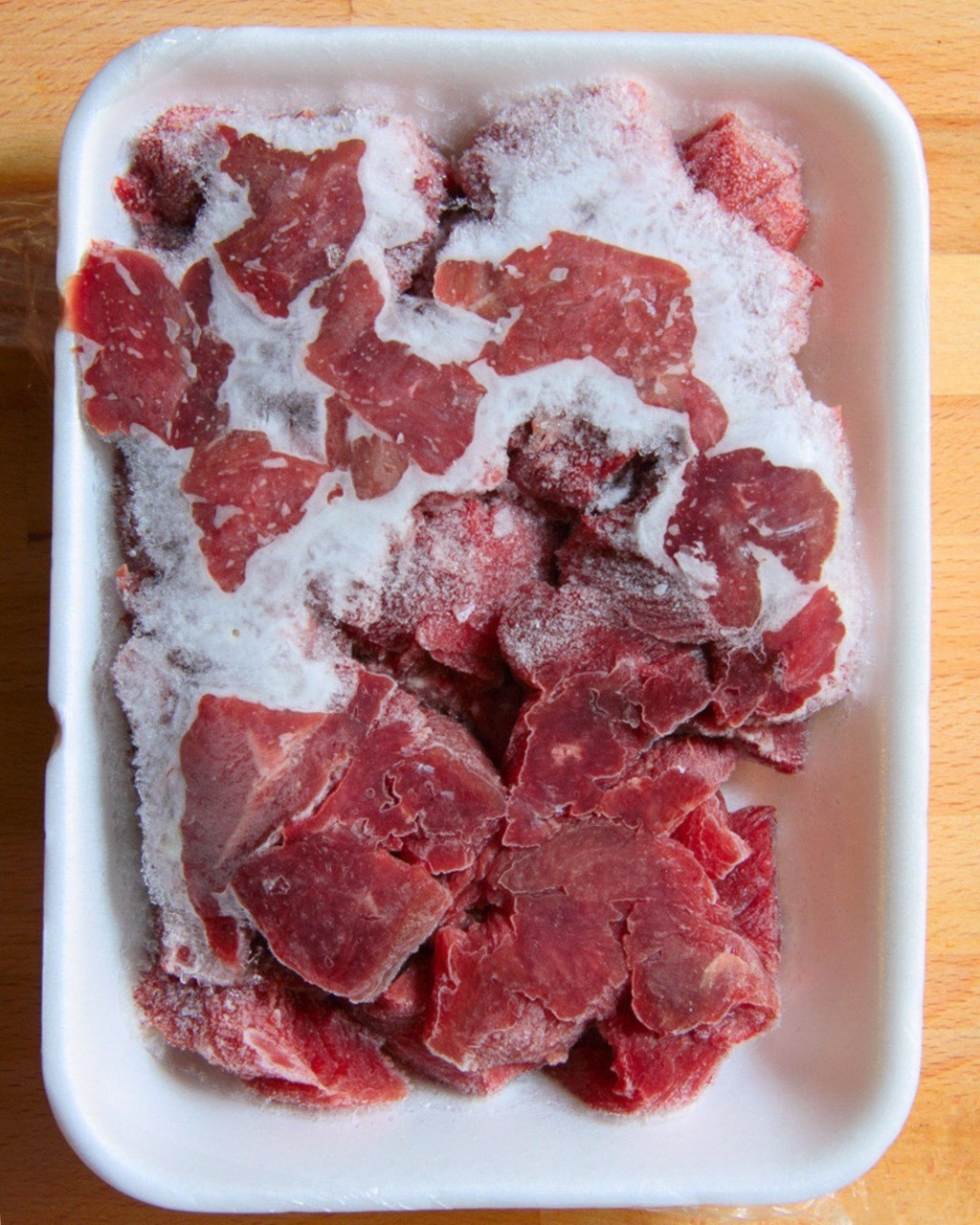ADVERTISEMENT
**The Correct Methods for Defrosting Meat: Ensuring Safety and Quality**
When it comes to defrosting meat, many people don’t realize that doing it incorrectly can not only impact the flavor and texture of your meal but also pose serious health risks. Improper defrosting can cause bacteria to grow, leading to foodborne illnesses. To ensure that your meat defrosts safely while retaining its quality, it’s essential to follow the correct methods.
In this article, we’ll walk you through the best ways to defrost meat, so you can cook your favorite dishes with confidence, knowing that your food is both safe and delicious.
—
### **Why Defrosting Meat Properly Is Important:**
– **Safety First:** When meat is left at room temperature for too long, bacteria like Salmonella and E. coli can multiply rapidly. These bacteria can cause food poisoning, leading to symptoms such as stomach cramps, vomiting, and diarrhea.
– **Maintains Quality:** The way you defrost meat affects its texture, flavor, and overall quality. Thawing meat improperly can cause it to become mushy, dry, or less flavorful.
– **Prevents Cross-Contamination:** Improper defrosting methods, such as thawing on the countertop, can spread bacteria to other surfaces in your kitchen, increasing the risk of cross-contamination.
Now let’s explore the best methods for defrosting meat, keeping both safety and quality in mind.
—
### **1. Refrigerator Thawing (Best Method)**
**Refrigerator thawing** is the safest and most reliable way to defrost meat. It keeps the meat at a consistent, safe temperature while thawing, preventing harmful bacteria from multiplying.
#### **How to Do It:**
– **Plan Ahead:** Refrigerator thawing takes time. Depending on the size and type of meat, it can take anywhere from several hours to a few days to thaw completely. For example, a small chicken breast may thaw in 24 hours, while a large roast could take several days.
– **Keep Meat in a Tray or Dish:** Place the meat in a tray or dish to catch any liquids that might leak out, preventing contamination of other foods in the fridge.
– **Temperature:** Ensure your refrigerator is set to **40°F (4°C)** or lower to keep the meat at a safe temperature during thawing.
– **Cook Within 1-2 Days:** After thawing in the refrigerator, meat should be cooked within 1-2 days, especially for poultry, ground meat, and seafood.
#### **Why It Works:**
– It keeps the meat at a safe temperature (below 40°F) throughout the entire thawing process.
– This method allows the meat to retain its moisture and texture, maintaining its overall quality.
– It provides ample time to plan meals, as the meat can be kept in the fridge for a short period after thawing.
—
### **2. Cold Water Thawing (Faster Method)**
If you don’t have time to wait for refrigerator thawing, **cold water thawing** is a faster option that can still be safe when done correctly. This method works well for smaller cuts of meat or individual portions.
#### **How to Do It:**
– **Seal Meat in a Leak-Proof Bag:** To avoid contamination, place the meat in a leak-proof plastic bag. This ensures that water doesn’t come into direct contact with the meat, which can affect its texture and taste.
– **Submerge in Cold Water:** Fill a large bowl or sink with **cold water** (never hot water, as it can promote bacterial growth). Submerge the sealed meat in the water.
– **Change Water Every 30 Minutes:** To ensure that the water stays cold enough to prevent bacterial growth, change the water every 30 minutes. Smaller cuts of meat can defrost in 1-2 hours, while larger pieces may take up to 4-6 hours.
– **Cook Immediately:** Once thawed, cook the meat immediately. Never refreeze meat thawed using this method, as it has been in the “danger zone” (between 40°F and 140°F) for too long.
#### **Why It Works:**
– This method is much quicker than refrigerator thawing, allowing you to defrost meat in a few hours instead of a day or more.
– As long as the meat is kept in a sealed bag and the water is changed regularly, it stays at a safe temperature.
—
### **3. Microwave Thawing (Quickest Method)**
If you’re in a hurry and need to thaw meat quickly, **microwave thawing** is your best option. Most modern microwaves have a defrost setting designed specifically for this purpose.
#### **How to Do It:**
– **Place Meat on a Microwave-Safe Plate:** Remove the meat from any packaging and place it on a microwave-safe plate to catch any juices that may leak out.
– **Use the Defrost Setting:** Set your microwave to the **defrost setting** based on the weight of the meat. Most microwaves will prompt you for the weight, or you can manually enter the weight of the meat to ensure accurate defrosting.
– **Check Regularly:** Stop the microwave every few minutes to check on the progress and flip or rotate the meat for even thawing. Be careful not to start cooking the edges of the meat, as the microwave can sometimes begin cooking the outer layers while the inside remains frozen.
– **Cook Immediately:** Once thawed, cook the meat immediately to prevent any bacteria from growing due to uneven thawing.
**Why It Works:**
– This is the fastest method and works well when you need to defrost meat right before cooking.
– It’s best for small cuts of meat or individual portions, such as chicken breasts, ground meat, or steaks.
For Complete Cooking STEPS Please Head On Over To Next Page Or Open button (>) and don’t forget to SHARE with your Facebook friends
ADVERTISEMENT
